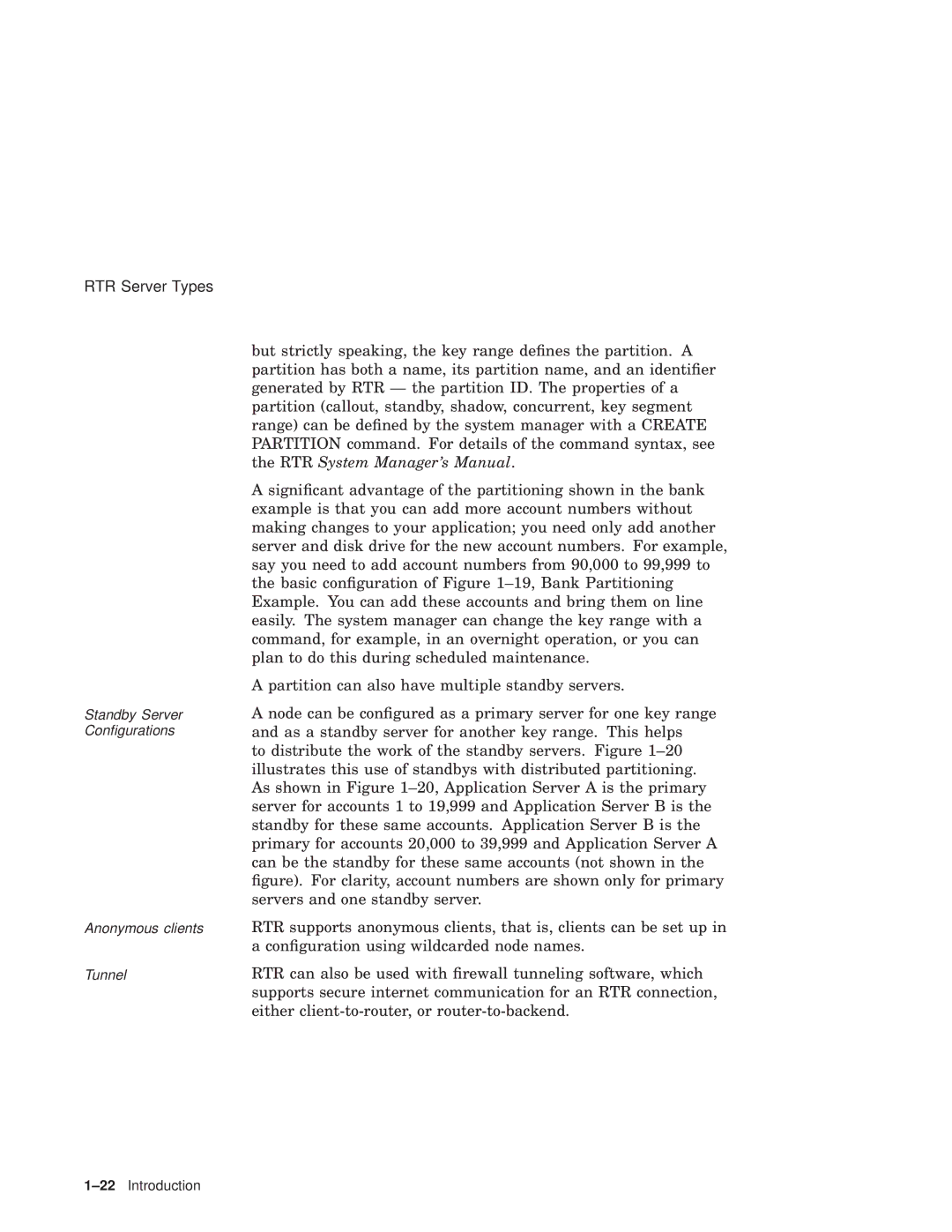RTR Server Types
Standby Server Configurations
Anonymous clients
Tunnel
but strictly speaking, the key range defines the partition. A partition has both a name, its partition name, and an identifier generated by RTR — the partition ID. The properties of a partition (callout, standby, shadow, concurrent, key segment range) can be defined by the system manager with a CREATE PARTITION command. For details of the command syntax, see the RTR System Manager's Manual.
A significant advantage of the partitioning shown in the bank example is that you can add more account numbers without making changes to your application; you need only add another server and disk drive for the new account numbers. For example, say you need to add account numbers from 90,000 to 99,999 to the basic configuration of Figure
A partition can also have multiple standby servers.
A node can be configured as a primary server for one key range and as a standby server for another key range. This helps
to distribute the work of the standby servers. Figure
RTR supports anonymous clients, that is, clients can be set up in a configuration using wildcarded node names.
RTR can also be used with firewall tunneling software, which supports secure internet communication for an RTR connection, either
